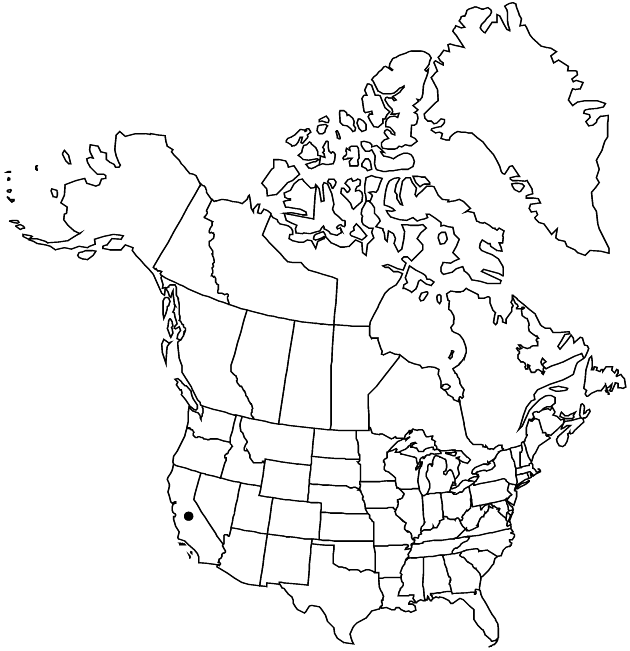Difference between revisions of "Pseudognaphalium beneolens"
Opera Bot. 104: 147. 1991.
FNA>Volume Importer |
FNA>Volume Importer |
||
| Line 15: | Line 15: | ||
|name=Gnaphalium canescens subsp. beneolens | |name=Gnaphalium canescens subsp. beneolens | ||
|authority=(Davidson) Stebbins & D. J. Keil | |authority=(Davidson) Stebbins & D. J. Keil | ||
| − | }}{{Treatment/ID/Synonym | + | }} {{Treatment/ID/Synonym |
|name=Pseudognaphalium canescens subsp. beneolens | |name=Pseudognaphalium canescens subsp. beneolens | ||
|authority=(Davidson) Kartesz | |authority=(Davidson) Kartesz | ||
| Line 33: | Line 33: | ||
|elevation=(1–)50–800(–2000) m | |elevation=(1–)50–800(–2000) m | ||
|distribution=Calif.;Mexico (Baja California). | |distribution=Calif.;Mexico (Baja California). | ||
| − | |discussion=<p>Pseudognaphalium beneolens differs from P. thermale in its leaves linear throughout, heads usually in elongate, paniculiform arrays, larger heads (greater numbers of phyllaries in greater numbers of series) with phyllaries more opaque and duller, and greater numbers of bisexual florets. The cauline leaves of P. beneolens tend to become curving-coiling. In areas of sympatry, habitats of P. beneolens are characteristically at lower elevations than those of P. thermale.</p> | + | |discussion=<p><i>Pseudognaphalium beneolens</i> differs from <i>P. thermale</i> in its leaves linear throughout, heads usually in elongate, paniculiform arrays, larger heads (greater numbers of phyllaries in greater numbers of series) with phyllaries more opaque and duller, and greater numbers of bisexual florets. The cauline leaves of <i>P. beneolens</i> tend to become curving-coiling. In areas of sympatry, habitats of <i>P. beneolens</i> are characteristically at lower elevations than those of <i>P. thermale</i>.</p> |
|tables= | |tables= | ||
|references= | |references= | ||
| Line 57: | Line 57: | ||
|publication year=1991 | |publication year=1991 | ||
|special status= | |special status= | ||
| − | |source xml=https://jpend@bitbucket.org/aafc-mbb/fna-data-curation.git/src/ | + | |source xml=https://jpend@bitbucket.org/aafc-mbb/fna-data-curation.git/src/8f726806613d60c220dc4493de13607dd3150896/coarse_grained_fna_xml/V19-20-21/V19_684.xml |
|tribe=Asteraceae tribe Gnaphalieae | |tribe=Asteraceae tribe Gnaphalieae | ||
|genus=Pseudognaphalium | |genus=Pseudognaphalium | ||
Revision as of 16:14, 18 September 2019
Annuals or short-lived perennials, 30–80(–110) cm; taprooted. Stems persistently tomentose, not glandular. Leaf blades mostly linear, 3–6 cm × 1.5–3.5 mm (sometimes smaller distally), bases not clasping, decurrent 5–15 mm, margins flat, faces concolor, loosely tomentose, not glandular. Heads usually in loose, paniculiform arrays. Involucres turbinate-campanulate, 5–6 mm. Phyllaries in (4–)5–6(–7) series, white (opaque, dull to shiny), ovate to ovate-oblong (inner usually with filiform keel and slight apiculum), glabrous. Pistillate florets (39–)44–69. Bisexual florets 5–8(–11). Cypselae ridged, smooth or weakly papillate-roughened. 2n = 14.
Phenology: Flowering (Apr–)Jun–Oct.
Habitat: Dry, open slopes and ridges, streambeds, road banks and other disturbed sites, sandy flats, dunes, coastal sage scrub, chaparral, yellow pine, foothill pine, blue oak woodland
Elevation: (1–)50–800(–2000) m
Distribution

Calif., Mexico (Baja California).
Discussion
Pseudognaphalium beneolens differs from P. thermale in its leaves linear throughout, heads usually in elongate, paniculiform arrays, larger heads (greater numbers of phyllaries in greater numbers of series) with phyllaries more opaque and duller, and greater numbers of bisexual florets. The cauline leaves of P. beneolens tend to become curving-coiling. In areas of sympatry, habitats of P. beneolens are characteristically at lower elevations than those of P. thermale.
Selected References
None.